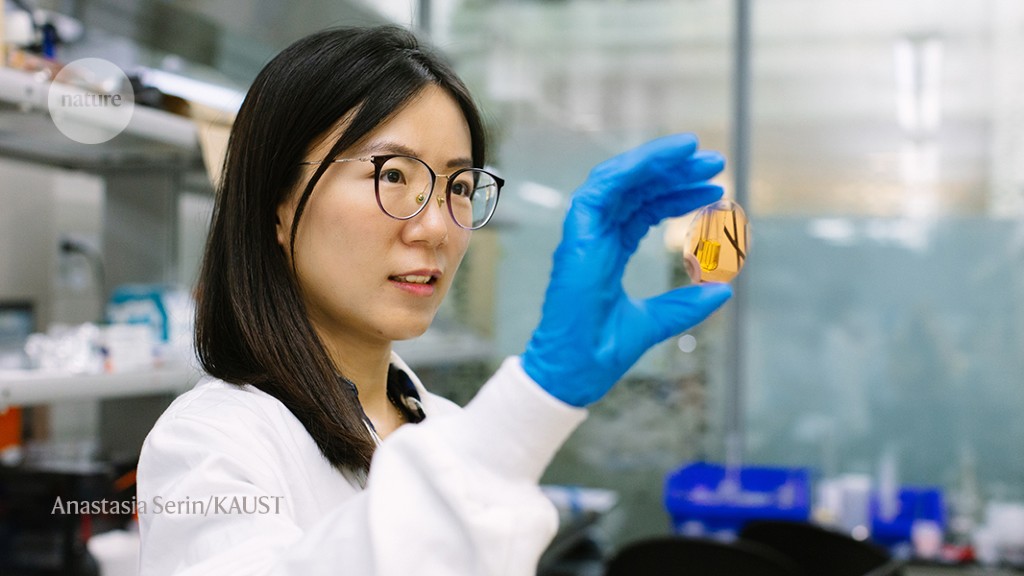I am a materials scientist at the King Abdullah University of Science and Technology (KAUST) in Thuwal, Saudi Arabia, and my work involves creating thin, flexible, conductive films that mimic human skin. This ‘e-skin’ has many potential applications, especially in health care, where it can be used to build wearable sensors to measure things such as blood pressure, movement and body temperature. It could also allow robots to sense touch, like humans do, or deliver drugs into the body.
KAUST is the first mixed-gender university in Saudi Arabia. Here, female employees have work and education opportunities equal to those of male employees.
In my laboratory, I make films as thin as one nanometre. In this photo, I’m standing in front of our chemical-vapour deposition furnace, where my team and I build the films. We do this on a very flat substrate: the disc I’m holding here. In the reflection on it you can see a vial filled with a fluid. This is the catalyst that we use to make the films out of small monomers, which bond in the furnace to form polymers. It took us three years to perfect our synthesis process.
In the furnace, I can vary the films’ pore structure and thickness, which affects their electrical and mechanical properties. This is directly related to the sensitivity and elasticity of the e-skin. We are still in the early stages of our research. One challenge is to scale up what we do in the lab to something commercially viable. We also need to work on the stability of our e-skin. We have only tested it for short-term use, but some applications might require sensors that work for days, or even months.
Thin, flexible sensors could be used in industrial settings as well: to detect toxic leaks rapidly and reliably, for example. My colleagues and I are also working on developing a film that can remove salt from seawater and brine, as an alternative to existing desalination methods. The opportunities are endless.







More News
Author Correction: Stepwise activation of a metabotropic glutamate receptor – Nature
Changing rainforest to plantations shifts tropical food webs
Streamlined skull helps foxes take a nosedive